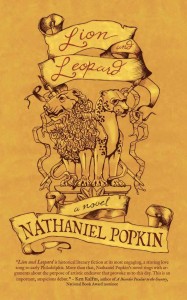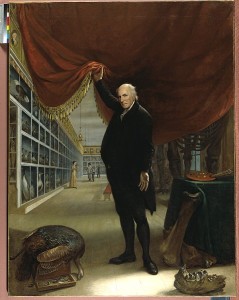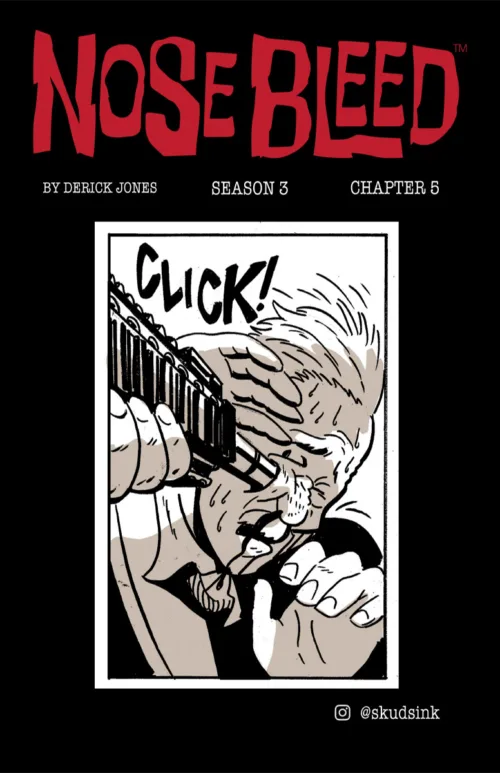Nathaniel Popkin’s new book, Lion and Leopard merges history and fiction in a novel that reads like a 19th Century road trip. With three lead characters and a bad guy, the book, as a comedy sketch, might be titled Three Amigos meet the Devil along the road to Philadelphia and Yikes! he’s an artist.
Intrigue and a plot to change the 19th Century art world in Philadelphia

A story of intrigue told in a flashback by one of the characters, the book has gossip (who knew all this stuff about the Charles Willson Peale family?!) and exudes an earthy atmosphere that I want to call Gothic, a la Wuthering Heights, a book I read this summer that I’m still in thrall to for its visceral portrayal of people acting badly with death around the corner. People in Popkin’s book, too, live close to the land — and city streets — you can smell it and taste it in the evocative writing.
The book revolves around three young chaps who are our heroes, a writer, Caleb, a babe-magnet but something of a cypher; a poetic consumptive with an ascerbic tongue, Dixcy; and the handsome sexy rake, Victor. You meet the trio on the road walking from Easton, PA, to Philadelphia. They are on a Quixotic mission to find art and artists and create the first ever catalog of American master artists. Along the way there is a lot of banter in this dialog-heavy book, and among the questions — What is art? Who is a master and who should be in the book?
How do you define a master painter?
Is Edward Hicks a master? The creator of the now-beloved Peaceable Kingdom paintings plays a cameo in Lion and Leopard as a quirky fellow who won’t answer his door, and when, under duress, he finally does, he is hugely inhospitable! An embattled Quaker with a compulsion to paint his biblical pictures of lions and lambs and a child leading them and William Penn and the Indians in the background, Hicks is one of several grumpy guys the trio encounters. They meet Hicks in Newtown, after someone in that town who collects art and artifacts, says they must go see Hicks’s paintings. Pretty clearly, one person thinks Hicks is a master, but that would appear to be the minority opinion of the time.
On to Philadelphia the lads go, to find the masters in the circle of Charles Willson Peale and his Academy. And it’s Peale and his sons, Raphaelle and Rembrandt, conniving, grasping and, frankly, kind of crazy, who are the foils for our threesome.
The Charles Willson Peale family – fierce, stubborn, ambitious

Peale pere, egotistical and perfectionist, is a fascinating bad actor. He’s clearly damaged his kids by his iron-fisted and unloving parenting. Raphaelle, the still-life painter, is an alcoholic who you suspect won’t live long. Rembrandt, with ego and aspirations to match his father yet less talent, according to dad, seeks refuge in Baltimore.
The Lion and the Leopard
In this book, whose title names two majestic predator cats, if Peale is the lion, then the leopard is a German artist, John Lewis Krimmel, who challenges Peale’s dominance over the art scene in Philadelphia with of a new type of (Romantic, naturalistic) art. His presence in the city excites our three heroes and sets the Peale’s collective teeth on edge. Krimmel propels the plot of this book into motion, and seems poised to go leonine and replace Charles Willson in the city’s art pecking order. And while his life plays a major role in the book, he, like Caleb the witness, is a cypher, and more of a plot necessity than a fully fleshed out person. In a book full of deep character portrayals, it’s the weird cabal of Peales — and the lonely and romantic three heroes — that are the big draw.
This is a great first novel by the Philadelphia writer and co-founder of the online magazine Hidden City. It’s a painterly book with rich depictions laid on with fine strokes of the brush, plenty of oils, and varnish to keep the hues true to the 19th Century. Popkin depicts a lively time in the city, and it jolts you to hear descriptions of Passyunk as a kind of cow path. But that’s what a historically-researched and written book should do, shake you from your current knowledge and insert some new ideas of the way things were. Lion and Leopard is also very densely-written and plotted. It took me a while to get through it, but when I reached the last page I couldn’t wait to start over on Page 1 and savor it all again.
More about the book, and to pre-order it from the publisher, The Head and The Hand Press, see the publisher’s website here.








